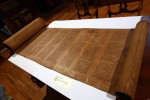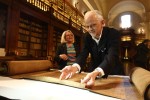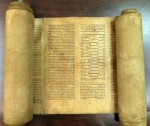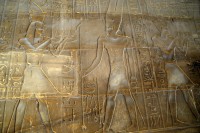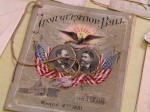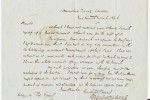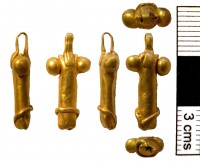Gian Lorenzo Bernini’s marble bust of Francesco I d’Este, Duke of Modena, needs your help. This Baroque masterpiece is part of the permanent collection of the Galleria Estense in Modena which houses the internationally important art collection of the Dukes of Este who ruled Modena for more than 500 years (1288–1796). Modena was devastated by the earthquakes that hit the north central Italian region of Emilia Romagna last May and the damage to the Galleria Estense was extensive. The museum has been closed ever since, the bust of Francesco I kept for its protection in a large wooden box where not even the workers can see it.
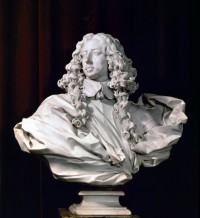 It’s a miracle that Bernini’s sculpture survived this time. Before the museum can reopen, its masterpieces need to be secured as much as possible against future seismic events. The kind of specialized equipment required to retrofit museums for earthquake safety is very expensive and Italy is flat broke. That means initiatives of government agencies like the Ministry of Cultural Heritage and Activities need private funding.
It’s a miracle that Bernini’s sculpture survived this time. Before the museum can reopen, its masterpieces need to be secured as much as possible against future seismic events. The kind of specialized equipment required to retrofit museums for earthquake safety is very expensive and Italy is flat broke. That means initiatives of government agencies like the Ministry of Cultural Heritage and Activities need private funding.
In the case of the bust of Francesco I d’Este, the non-profit heritage protection organization Fondo Ambiente Italiano (in English known as the Italian National Trust) is helping the ministry raise money to develop a bespoke anti-seismic pedestal which will keep the sculpture from crashing to the floor when the next earthquake hits.
In cooperation with a team of qualified experts of the IUAV University of Venice, we are working on an innovative seismic isolating device system based on the theory of the double pendulum. Essentially, the anti-seismic pedestal diminishes the strength coming from the ground to the piece of art, therefore securing it from destruction.
In the US, they’ve started an Indiegogo campaign to raise $60,000 of the $80,000 they need to build and install the pedestal. There are 30 days left in the campaign and so far they’ve only raised $1,372 from 20 contributors. I think we can do better than that.
Historical preservation and heritage protection suffers enormously from slashed budgets and so often there’s no way for people who care but who happen to live far away from the problem to pitch in. I’ve often wanted to help donate when I’ve come across these kinds of stories and been frustrated by how localized these fundraising campaigns are. Requiring people to send a personal check across oceans by mail in this day and age just locks out the world. Crowdfunding, on the other hand, draws the world in, but it only works if people hear about it, so please spread the word. If you’re on Facebook, here’s the related FB page you can link to to promote the campaign.
There are some exceptional perks for contributors to this one: two free tickets to the museum for a $10 contribution, two free tickets and a book about the Este art collection for $20. For $50 they carve your name — or the name of the person in whose name you donate — on the new pedestal. It keeps getting better from there. A hundred dollars gets you all of the above plus of a bottle of Del Duca PDO Traditional Balsamic Vinegar of Modena, a top of the line balsamic aged 12 years. You could easily spend that much on a vinegar of this quality imported from the magical land where all true balsamic vinegar is made. Or if opera is more to your taste, 100 bucks will get and a friend an evening at the Luciano Pavarotti Opera House. Like cars? Modena has got you covered with two tickets to the new Museo Casa Enzo Ferrari . For the big donations, you get Modena handed to you on a plate, with all the goodies at the lower rates plus a personalized tour of the city for $1000 and a weekend with hotel included plus all the above for $5000.
See the video below for more details about the campaign, the Galleria Estense and a very sad shot of the box Francesco d’Este is in right now, and please spread the word. Even if Baroque sculpture of luminaries from Italian ducal families is not your bag, the next campaign that is inspired by the success of this one might save your favorite thing ever.
[youtube=http://youtu.be/TiyO4YBhngI&w=430]

